Welcome to the world of container gardening, where you can grow delicious and nutritious fruits in a limited space. If you’re a beginner looking to join a rewarding horticultural journey, you’re in the right place. This guide will explore ten popular dwarf fruit varieties perfect for containers. You don’t need a vast garden to enjoy homegrown fruit; a small balcony or patio will do just fine.
Dwarf Fruit Varieties Grow Easily in Containers
What are Dwarf Fruit Trees?
A dwarf tree is a small-sized tree created through a horticultural technique called grafting. Grafting is a method of plant reproduction where parts of different trees are joined together. To make a dwarf tree, a cutting, known as a scion, is taken from the upper part of a parent fruit tree. The scion includes branches with budding tips. This scion is then carefully joined to the rootstock of another compatible tree.
The rootstock has the tree’s underground portion, roots, and a short trunk. The connection point, where the scion and rootstock meet, heals and fuses together. This process is called callousing. The choice of a scion is based on its ability to produce good fruit. On the other hand, the rootstock influences the tree’s size when it matures, its resistance to pests and diseases, its ability to withstand harsh conditions, and its soil type.
Most fruit trees are grown for consistency by grafting the scion onto the rootstock. Different rootstocks are available, each affecting the tree’s final size. For instance, an apple tree grafted onto an M25 rootstock becomes a standard-sized tree, around 30 feet tall. But when grafted onto an M9 rootstock, it becomes a dwarf tree, reaching only 8 feet. There are also multi-grafted fruit trees, where several scions are joined to the rootstock, resulting in a single tree producing multiple fruit varieties.
Benefits of Growing Popular Dwarf Fruit Varieties in Containers
- You can move the containers around to adjust to the sun, shade, and weather conditions.
- You can control the soil quality and fertility using potting mix and compost.
- You can harvest the fruits easily without climbing ladders or bending down.
- You can choose from different fruit varieties suitable for container growing, such as apples, cherries, figs, pears, plums, peaches, strawberries, raspberries, gooseberries, and blueberries.
- You can grow self-pollinating or cross-pollinating fruit varieties that do not need another tree for pollination.
- You can protect the containers from pests, diseases, and frost by moving them indoors or covering them with netting or blankets.
Selecting the Right Container for Dwarf Fruit Varieties
If you love fresh fruit but don’t have enough space for a full-sized orchard, growing dwarf fruit trees in containers is a great way to enjoy a bountiful harvest in a small area. Dwarf fruit trees are specially bred to have a smaller size and faster maturity than their standard counterparts, making them ideal for container gardening. The container you choose for dwarf fruit trees will affect their health, growth, and productivity.
Size: The container should be big enough to accommodate the root system of your dwarf fruit tree but not too large that it will take too long to fill with soil and water. A rule of thumb is to choose a container at least half the height and width of the mature tree. For most dwarf fruit trees, a 15-20 gallon pot is a good size.
Material: The container should be made of a durable and weather-resistant material that can withstand temperature fluctuations and exposure to sunlight. Plastic, metal, wood, and ceramic are common container materials. Plastic pots are lightweight and inexpensive but can heat quickly and crack in cold weather. Metal pots are sturdy and long-lasting but can get hot and rust over time. Wood pots are natural and attractive but can rot and harbor pests and diseases. Ceramic pots are heavy and expensive but also beautiful and insulating.
Drainage: The container should have adequate drainage holes to prevent waterlogging and root rot. You can also fill a layer of pebbles, gravel, or broken pottery at the bottom to improve drainage and aeration. Use a saucer or tray under the pot to catch excess water and protect your surface from stains.
Shape: The container should have a shape that suits your space and preference. You can choose from round, square, rectangular, or oval pots, depending on what fits best in your balcony, patio, or deck. You can also opt for hanging baskets, window boxes, or vertical planters to save floor space and create a more dynamic look.
Soil and Fertilizer Requirements for Dwarf Fruit Varieties
Citrus: Lemon, lime, orange, and grapefruit thrive in containers with well-draining, slightly acidic soil (pH 5.5 to 6.5) enriched with organic matter. Enhance soil aeration with perlite or vermiculite. Regularly feed them a balanced fertilizer with nitrogen, phosphorus, potassium, and micronutrients. Use slow-release fertilizer every 2-3 months or liquid fertilizer on 2 weeks during the growing season.
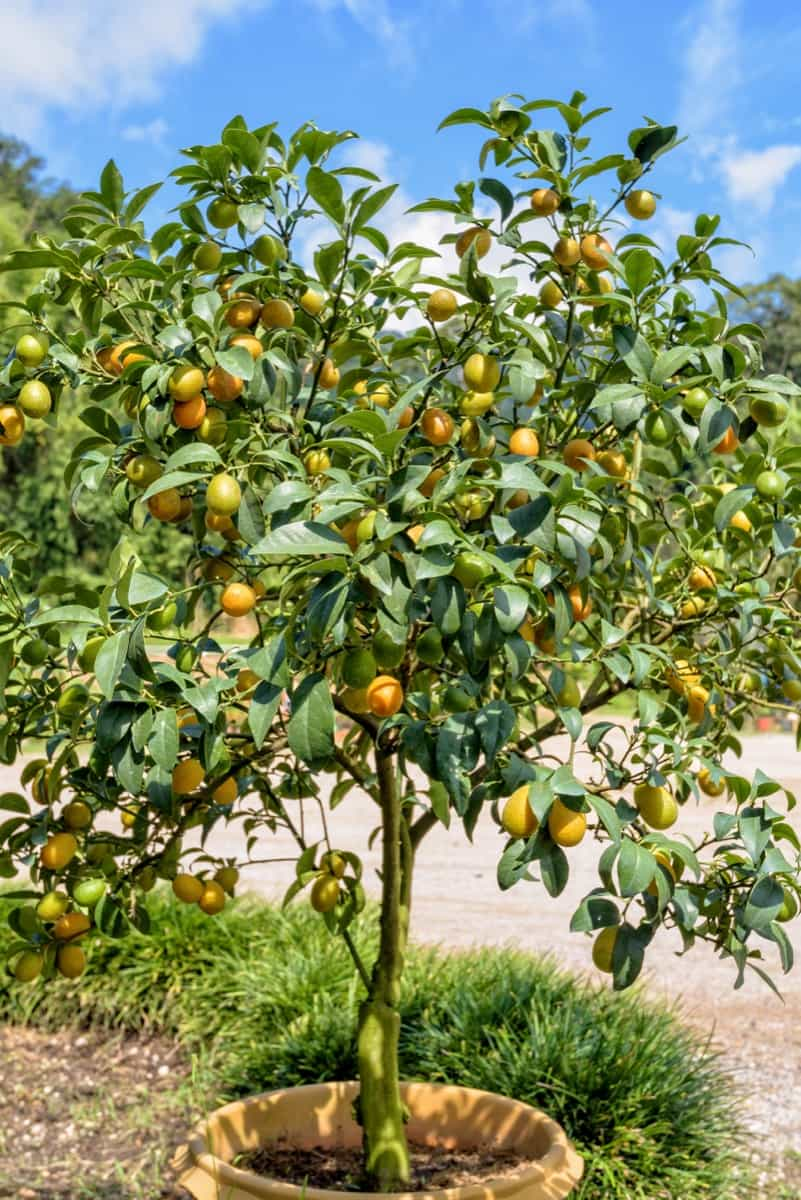
Berries: Strawberries need neutral to slightly alkaline soil (pH 6.0 to 6.8) with a compost-enriched potting mix. Monthly balanced fertilizer applications suffice. Blueberries prefer acidic soil (pH 4.5 to 5.5) with peat moss or pine bark in the mix. Feed them an acid-loving fertilizer bi-weekly. Raspberries and blackberries thrive in slightly acidic soil (pH 5.5 to 6.5) with organic matter in the potting mix. Monthly balanced fertilizer applications are suitable.
Apples: These adaptable dwarf trees grow well in containers. Opt for loamy soil (pH 6.0 to 7.0) enriched with compost or manure in the potting mix. Monthly balanced fertilizer applications during the growing season support their growth.
Top Dwarf Fruit Varieties Grow Easily in Containers
These Ten dwarf fruit trees are excellent choices for a container garden. They offer a variety of delicious fruits, from apples to peaches, plums, cherries, oranges, figs, mangoes, and mulberries. While some are self-fertile, others require cross-pollination, so it’s essential to consider your local climate and specific growing conditions when selecting the right dwarf fruit trees for your garden.
Dwarf Apple Trees
- Fast Fruiting: Dwarf apple trees can yield crisp and juicy apples within two years of planting. Varieties like Gala, Fuji, Honeycrisp, and Granny Smith offer diverse flavors and colors.
- Sun and Care: These trees need at least six hours of sunlight daily, regular watering, and fertilization.
- Cross–pollination: To bear fruit, they require cross-pollination from another apple tree, meaning you’ll need two trees or a self-pollinating variety.
In case you missed it: Eggplant Shoot and Fruit Borer Management: Control and Prevention for High-Profit Margins
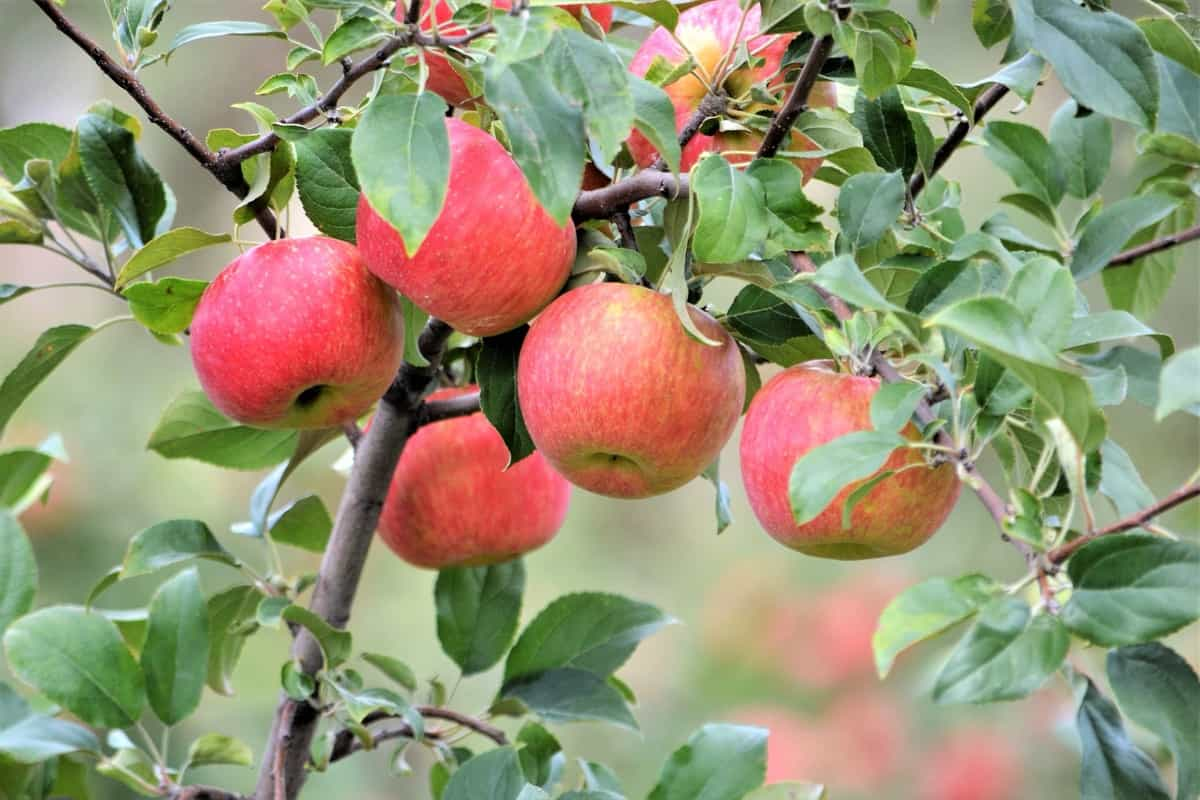
Dwarf Citrus Trees
- Tropical Delights: Dwarf citrus trees, including lemons, limes, oranges, grapefruits, mandarins, and kumquats, bring a touch of the tropics to your container garden.
- Sun and Maintenance: They demand at least eight hours of sunlight daily, consistent watering and feeding.
- Frost Protection: These trees are sensitive to frost and need protection during cold weather, including bringing them indoors or using covers.
In case you missed it: 17 Gardening Mistakes to Avoid This Summer: For Vegetables, Flowers, Herbs, and Fruits
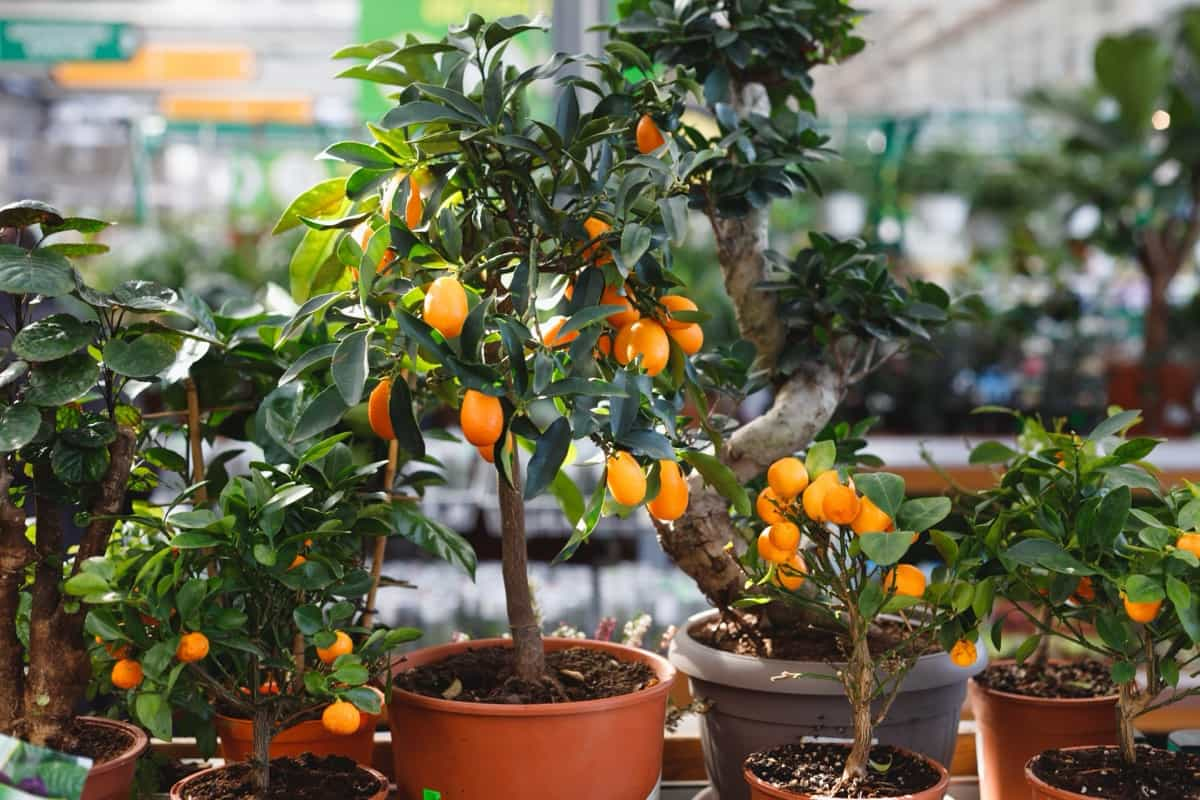
Dwarf Fig Trees
- Sweet Figs: Dwarf fig trees produce sweet, succulent figs for fresh eating, jams, and desserts. Varieties like Brown Turkey, Celeste, and Black Mission offer unique shapes and colors.
- Sun and Care: They require a minimum of six hours of sunlight, moderate watering, and fertilization.
- Drought Tolerance: Dwarf fig trees are self-pollinating and can withstand drought and frost, making them low-maintenance.
In case you missed it: Best Fertilizer for Terrace Plants: Covering Vegetables, Fruits, Flowers, and Herbs
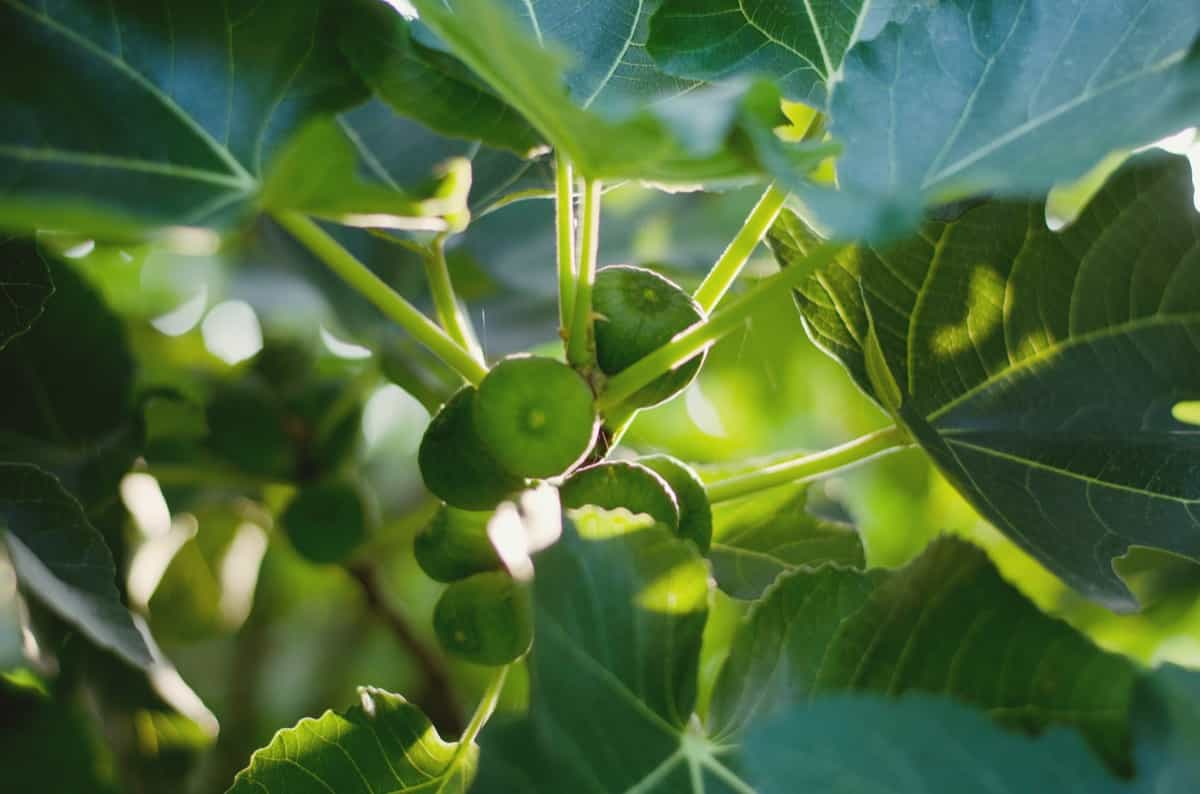
Dwarf Peach Trees
- Juicy Peaches: Dwarf peach trees bear juicy and delicious peaches, with varieties like Elberta, Redhaven, and Bonanza offering distinct sizes and flavors.
- Sun and Care: They need at least six hours of daily sunlight, regular watering, and fertilization.
- Cross-Pollination: Similar to apples, they require cross-pollination, meaning you’ll need two trees or a self-pollinating variety.
In case you missed it: How to Start Peach Farming in the USA from Scratch: A Step-by-Step Guide for Beginners
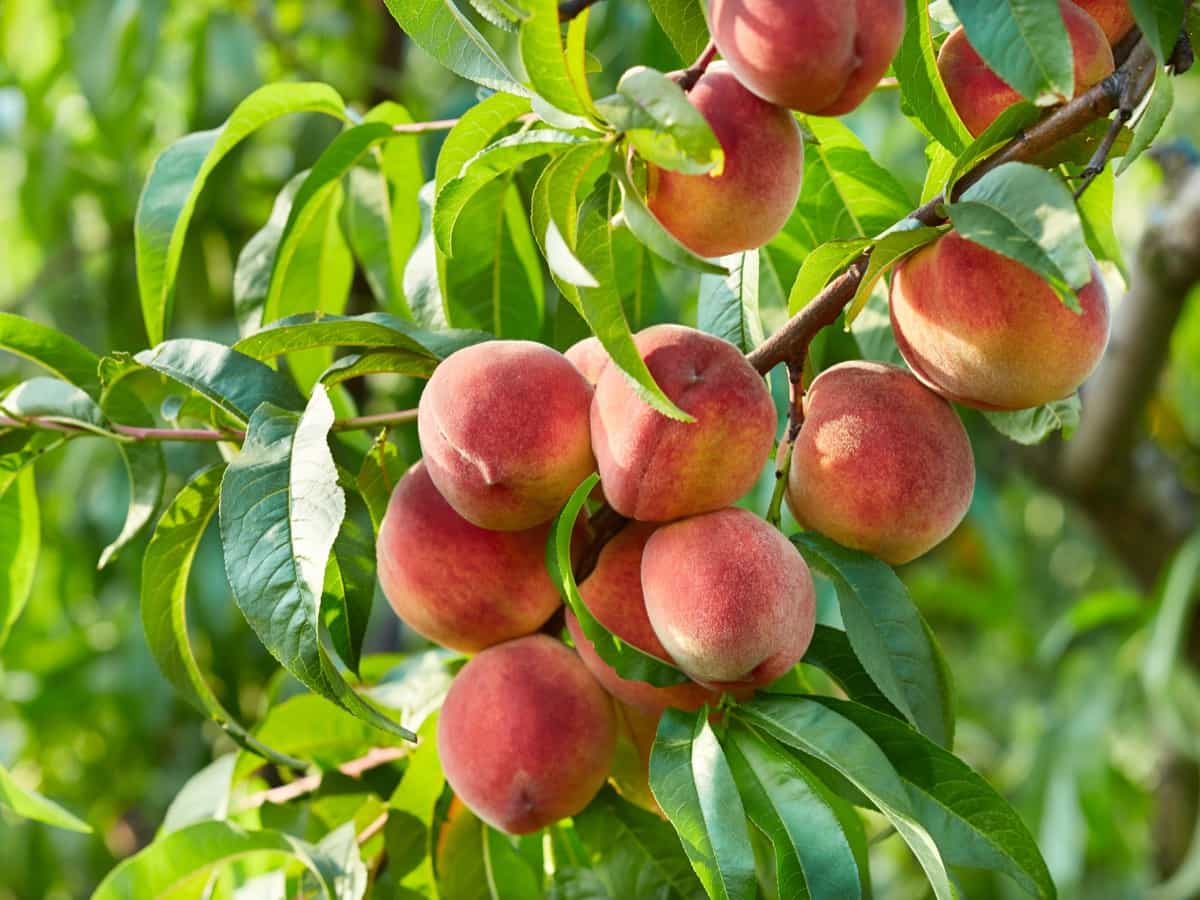
Dwarf Cherry Trees
- Sweet or Sour Cherries: Dwarf cherry trees yield sweet or sour cherries suitable for fresh consumption, pies, and preserves. Varieties like Bing, Montmorency, and Stella offer different tastes and colors.
- Sun and Maintenance: These trees need at least six hours of sunlight, frequent watering, and fertilization.
- Cross-Pollination: Like apples and peaches, they require cross-pollination, necessitating two trees or a self-pollinating variety.
In case you missed it: Top 15 Steps to Boost Cherry Fruit Yield: How to Increase Fruit Size, Quality, and Production
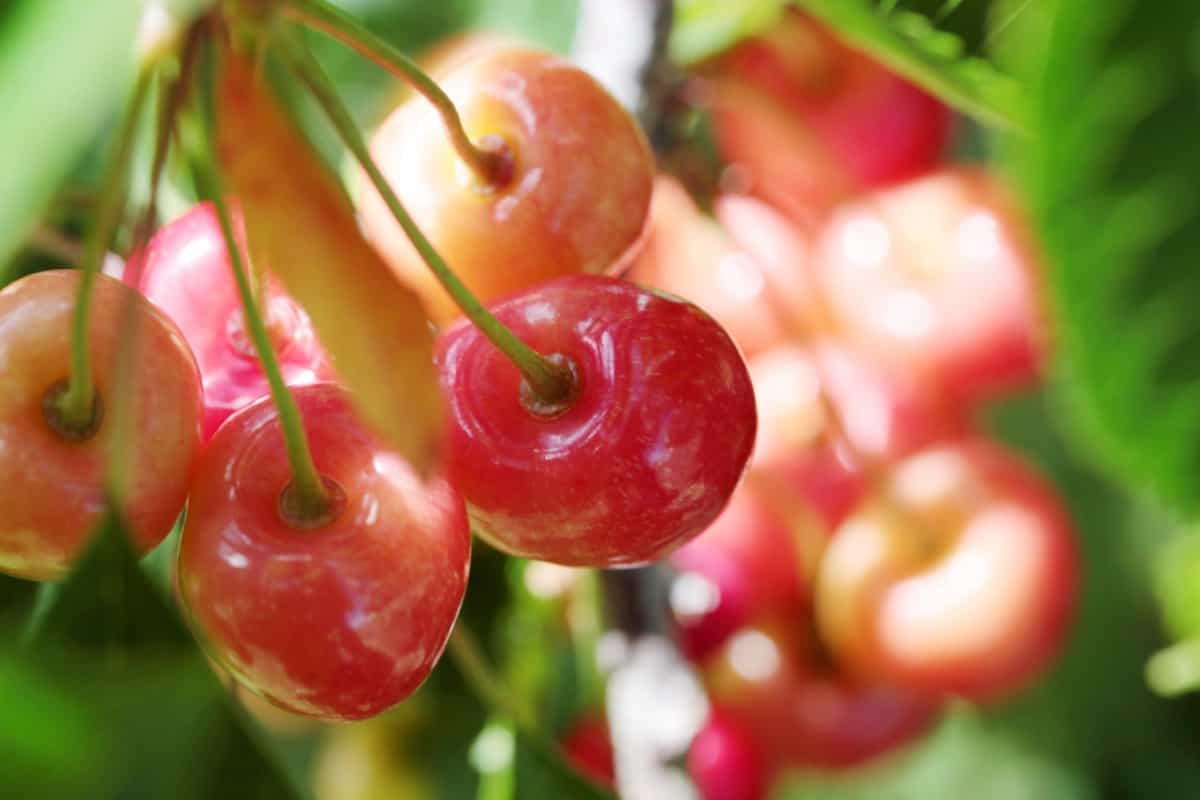
Santa Rosa Plum (Prunus salicina ‘Santa Rosa’)
- Description: Santa Rosa plums are sweet and fragrant. These trees are self-fertile and produce delicious fruit.
- Size: They reach a dwarf size of about 10 to 12 feet in height, width.
- Growing Zones: Suitable for zones 5 to 9.
- Chill Hours: These trees need 300 to 500 chill hours.
- Self-Fertile: Yes.
Red Delicious Apple (Malus domestica ‘Red Delicious’)
- Description: Red Delicious apple trees produce sweet and juicy apples. These trees require cross-pollination, meaning you need another apple tree nearby to bear fruit.
- Size: They reach a dwarf size of about 10 feet in height and width.
- Growing Zones: Suitable for zones 5 to 8.
- Chill Hours: These trees need 700 to 800 chill hours.
- Self–Fertile: No, they require a pollinator.
Elberta Peach (Prunus persica ‘Elberta’)
- Description: Elberta peaches are large, juicy, and sweet. They are self-fertile but benefit from another nearby peach tree for improved fruit production.
- Size: Dwarf peaches typically grow to 8 to 10 feet in height and width.
- Growing Zones: Suited for zones 5 to 9.
- Chill Hours: They require 800 to 950 chill hours.
- Self–Fertile: Yes.
Black Tartarian Cherry (Prunus avium ‘Black Tartarian’)
- Description: Black Tartarian cherries have a rich, full-bodied flavor and are great for fresh eating and preserves. They require cross-pollination with another cherry tree.
- Size: Dwarf cherries typically grow to 8 to 14 feet in height and width.
- Growing Zones: Appropriate for zones 5 to 8.
- Chill Hours: They need 700 to 800 chill hours.
- Self–Fertile: No.
Ice Cream Mango (Mangifera indica ‘Ice Cream’)
- Description: Ice Cream mangoes are sweet and creamy. These dwarf trees grown in containers and require protection from frost in colder regions.
- Size: They typically reach 6 to 8 feet in height and 4 feet in width.
- Growing Zones: Suitable for zones 9 to 11.
- Self–Fertile: Yes.
Washington Navel Orange (Citrus sinensis ‘Washington’)
- Description: Washington Navel oranges are seedless and ideal for fresh eating. They are self-fertile and can be pruned to a petite size.
- Size: Dwarf oranges typically reach 6 to 8 feet in height and width.
- Growing Zones: Best for zones 9 to 10.
- Self–Fertile: Yes.
Celeste Fig (Fiscus carica ‘Celeste’)
- Description: Celeste figs are small, bronzy-purplish, and rich in flavor. They are self-fertile and more cold-hardy than other fig varieties.
- Size: Dwarf figs usually grow 7 to 10 feet in height and width.
- Growing Zones: Suited for zones 6 to 10.
- Chill Hours: They require 100 chill hours.
- Self–Fertile: Yes.
Black Mulberry (Morus nigra)
- Description: Black mulberries produce oblong, sweet fruits. They grown as a tree or shrub, and their fruit is tasty and versatile.
- Size: Dwarf black mulberries can be kept at 2 to 10 feet in height, width.
- Growing Zones: Appropriate for zones 5 to 9.
- Chill Hours: They need 200 to 400 chill hours.
- Self–Fertile: Yes.
Planting, Pruning, and Care Instructions for Dwarf Fruit Varieties
- Pruning: Late winter or early spring, pruning maintains tree shape and prevents diseases. Remove diseased branches and trim side shoots.
- Sunlight: Dwarf trees need ample sunlight. Find a sunny spot for them to thrive.
- Watering and Fertilizing: Keep soil well-drained to avoid root rot. Water consistently during dry spells. Follow fertilizer instructions diligently to avoid overfeeding. Bring potted trees indoors during cold temperatures, ensuring they receive adequate sunlight.
- Pot Size: Upgrade to a larger container to provide room for growth. Repot every two years for a fresh start.
Grafting
Steps to Grafting
- Select compatible fruit tree species.
- Cut a healthy scion with buds.
- Create a cut in the rootstock.
- Insert the scion, aligning the cambium layers.
- Secure them with tape until they heal.
Caring for Grafted Trees
- Avoid heavy pruning post-grafting.
- Maintain consistent watering.
- Keep the tree indoors until fully healed.
- Watch for signs of disease and take action promptly.
Overcoming Challenges in Growing Dwarf Fruit Trees
- Choose disease-resistant varieties to combat pests and diseases.
- Apply copper-based fungicides before bud break for protection.
- Maintain an open canopy through pruning for better sunlight exposure.
- Opt for dwarf fruit tree varieties or those grafted onto dwarf rootstocks.
- Use larger containers to accommodate root systems and maximize space.
- Place containers in spots with ample direct sunlight.
- Water trees appropriately based on their needs to find the right balance.
- Regularly inspect for pests and diseases.
- Implement organic pest control methods and maintain good sanitation practices.
Frequently Asked Questions on Popular Dwarf Fruit Varieties
Can I Grow Dwarf Fruit Trees on a Balcony or in Small Spaces?
Yes, some dwarf fruit varieties are perfect for balconies and limited spaces, making them great for apartment gardening.
What is the Best Time to Prune Dwarf Fruit Trees?
Prune in late winter or early spring while the trees are dormant, but the cold weather has passed.
Conclusion
Cultivating dwarf fruit trees in containers offers a rewarding experience. With proper care, disease prevention, and creative solutions to space and light constraints, beginners can enjoy a thriving miniature orchard in their backyard.
- Goat Farming Training Programs in India: A Beginner’s Guide
- Types of Pesticides Used in Agriculture: A Beginner’s Guide
- Economical Aquaculture: A Guide to Low-Budget Fish Farming
- 15 Common Planting Errors That Can Doom Your Fruit Trees
- How to Make Houseplants Bushy: Effective Tips and Ideas
- Innovative Strategies for Boosting Coconut Pollination and Yield
- Pollination Strategies for Maximum Pumpkin Yield
- The Complete Guide to Chicken Fattening: Strategies for Maximum Growth
- Natural Solutions for Tulip Problems: 100% Effective Remedies for Leaf and Bulb-Related Issues
- Revolutionizing Citrus Preservation: Towards a Healthier, Greener Future
- Natural Solutions for Peony Leaf and Flower Problems: 100% Effective Remedies
- Maximizing Profits with Avocado Contract Farming in India: A Comprehensive Guide
- Natural Solutions for Hydrangea Problems: 100% Effective Remedies for Leaf and Flowers
- The Ultimate Guide to Choosing the Perfect Foliage Friend: Bringing Life Indoors
- From Sunlight to Sustainability: 15 Ways to Use Solar Technology in Agriculture
- The Ultimate Guide to Dong Tao Chicken: Exploring from History to Raising
- The Eco-Friendly Makeover: How to Convert Your Unused Swimming Pool into a Fish Pond
- Mastering the Art of Delaware Chicken Farming: Essentials for Healthy Backyard Flocks
- 20 Best Homemade Fertilizers for Money Plant: DIY Recipes and Application Methods
- How to Craft a Comprehensive Free-Range Chicken Farming Business Plan
- Brighten Your Flock: Raising Easter Egger Chickens for Beauty and Bounty
- How to Optimize Your Poultry Egg Farm Business Plan with These Strategies
- Subsidy for Spirulina Cultivation: How Indian Government Schemes Encouraging Spirulina Farmers
- Ultimate Guide to Raising Dominique Chickens: Breeding, Feeding, Egg-Production, and Care
- Mastering the Art of Raising Jersey Giant Chickens: Care, Feeding, and More
- Ultimate Guide to Raising Legbar Chickens: Breeding, Farming Practices, Diet, Egg-Production
- How to Raise Welsummer Chickens: A Comprehensive Guide for Beginners
- How to Protect Indoor Plants in Winter: A Comprehensive Guide
- Ultimate Guide to Grow Bag Gardening: Tips, Tricks, and Planting Ideas for Urban Gardeners
- Guide to Lotus Cultivation: How to Propagate, Plant, Grow, Care, Cost, and Profit
- Agriculture Drone Subsidy Scheme: Government Kisan Subsidy, License, and How to Apply Online
- Ultimate Guide to Raising Araucana Chickens: Breed Profile, Farming Economics, Diet, and Care
- Bringing Hydroponics to Classroom: Importance, Benefits of Learning for School Students
- Ultimate Guide to Raising Polish Chickens: Breed Profile, Farming Economics, Diet, and Care
- Ultimate Guide to Raising Australorp Chickens: Profile, Farming Economics, Egg Production, Diet, and Care
- Silkie Chicken Farming: Raising Practices, Varieties, Egg Production, Diet, and Care